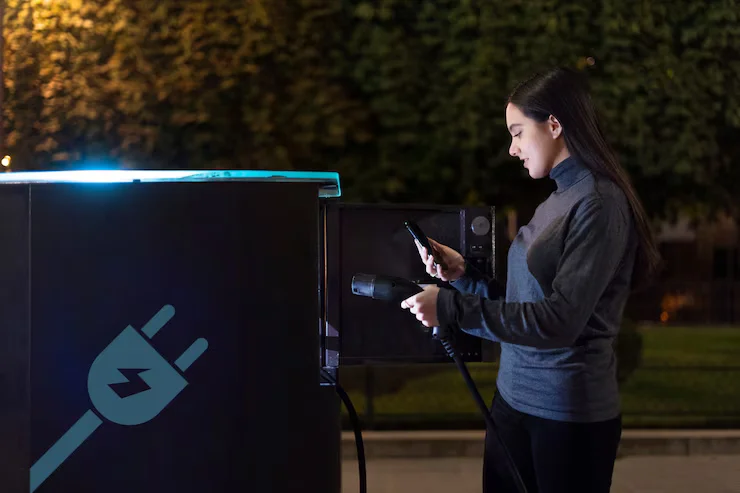The global transition toward more sustainable transportation is relying heavily on electric vehicles (EVs). With fewer emissions and reduced dependency on fossil fuels, EVs are an attractive alternative to internal combustion engine (ICE) vehicles. But in Australia, even as interest in EVs grows and government policies start to shift in their favor, the market is growing far more slowly than many had hoped.
This is mostly due to one big issue: charging infrastructure. The good news is that in 2021, the federal government allocated $250 million to boost the national charging network.
The bad news is that in 2023, everyone is still waiting to see tangible results. For many drivers, they have vowed to never drive an electric vehicle until this issue is resolved once and for all. Read on further to learn more about this problem:
The Current State of EV Adoption in Australia
Compared to other developed nations, EV adoption in Australia has been quite slow. Government policies that strongly support the EV transition and an already well-established public charging network have driven up EV sales in countries like Norway, the Netherlands, and the United Kingdom.
In contrast, in 2021, EVs accounted for only 1.5% of total vehicles sold in Australia. PEV sales are not just crawling; the pace even seems to be slowing. Why? Higher sticker prices, too few models, and too many incentive-lacking states are some of the reasons. But the biggest culprit may be the fact that there is simply too limited of a charging network in Australia to support mass-EV use.
Challenges of Limited Charging Infrastructure
Range Anxiety and Consumer Hesitation
One of the biggest disincentives to EV adoption is range anxiety; the fear that an EV will run out of charge before it can get to its destination, due to insufficient charging stations. Unlike gas stations, which you can find almost anywhere in this country, charging stations are still few and far between. That’s particularly true in the kind of regional and rural places where you often might take a road trip.
Given the easy availability of charge is seen as vital to the success of EVs, the country has to find a way to not only fund more charging stations but also strategically site them in reliable places. Otherwise, too many potential EV buyers will continue to be too afraid to buy.
Disparity Between Urban and Rural Charging Networks
Charging stations are increasing in metropolitan areas like Sydney, Melbourne, and Brisbane, but in rural and regional Australia, the situation is the opposite. Strikingly, much of rural Australia is seeing a decline in the already scant infrastructure that might support electric vehicles.
The result is that city dwellers can increasingly turn to EVs, while virtually anyone living west of the Divide or more than a few hours from the nearest charging station is left with little viable choice but to go on using their petrol- or diesel-fueled vehicles.
Slow Expansion of Public Charging Stations
Installing public charging stations has not kept up with the burgeoning interest in EVs. Right now, Australia has far too few charging bays; fewer than 5,000 public charging points altogether, by some accounts.
These are not evenly distributed; some areas are served much better than others. Even the bays in well-served areas are, for the most part, far too few in number. There are many reasons for this deficiency, but it essentially boils down to these three:
- It costs a lot of money to put in each station.
- It can take a very long time to get permission to install each one.
- There is no central authority to ensure that these two problems get solved in a timely manner.
High Cost of Charging Infrastructure Installation
Building a complete network of EV charging stations is an extravagant expense, with the price heavily dependent on location and power capacity. Upgrading the power grid to handle all this new demand adds yet another layer of expense and complication.
When all is said and done, as with so many aspects of the electrification of transportation, it seems to be falling to the private sector and the municipalities to pay for this expansion.
Potential Solutions to Overcome Infrastructure Challenges
Faster Deployment of Charging Stations
Governments and private entities must work together to streamline the process of installing new charging stations. Reducing regulatory hurdles, simplifying permit approvals, and offering financial incentives for businesses to set up charging stations could significantly boost infrastructure development.
The Networks Must Be Built Faster in All Locations
To put the charging station infrastructure in place, governments and private entities must collaborate. They can do this by reducing the number of regulations to be navigated, making it easier to obtain permits, and encouraging businesses to set up charging stations through financial incentives.
Incentivizing Investment in Fast Charging Technology
Increasing the number of fast-charging stations would mean more availability and reduced wait times, assuming they are also located in the right places. Incentives to invest in more fast chargers would also help alleviate range anxiety in those who swear they will never drive an electric vehicle.
Incorporating Renewable Energy into the Charging Infrastructure
Renewable energy sources such as solar and wind power should drive the charging stations to ensure sustainability. This move would be a step toward reducing the overall environmental footprint of the electric vehicles.
Diversifying Charging Alternatives at Work and Home
It would help lessen the dependence on public charging stations if businesses, apartment complexes, and residential communities would install EV chargers. Federal and state governments could use incentives and grants to nudge property developers toward integrating EV chargers into new and existing multifamily developments.
The Best Option Until the Proper Infrastructure Is in Place Is to Never Drive an Electric Vehicle
While EV adoption in Australia was slowly gaining momentum, a limited charging infrastructure remains a significant barrier. Current availability of charging stations, particularly in urban vs. rural areas, has caused range anxiety, which has in turn slowed some of the adoption momentum seen in 2021 and 2022.
Until this lack of charging capability is fully and properly addressed, it’s likely that EV market in the Outback will remain stalled.







